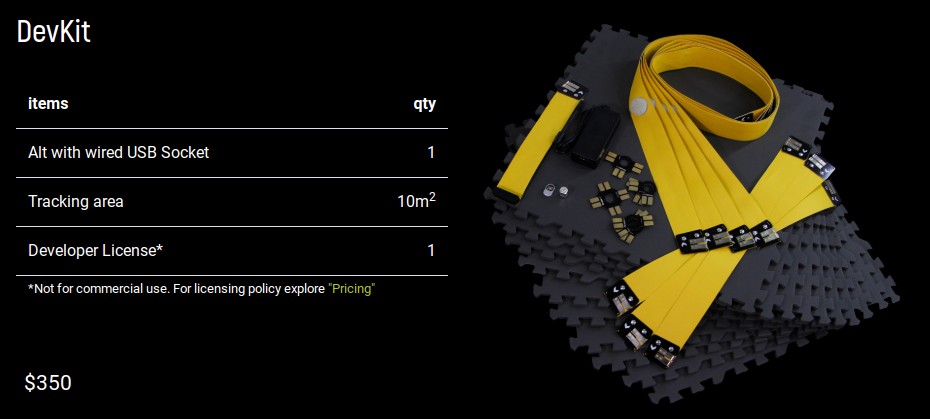Antilatency’s positional tracking system for location-based VR is available for order.
We last tested Antilatency’s tracking system at CES 2019 paired with Oculus Go and it provided a pretty solid room-scale experience, albeit with an empty scene. The website for Antilatency lists a range of prices for commercial multiuser options. A developer kit is available starting at $350 with additional add-ons available to connect different accessories and HMDs, like the Pico G2.
Antilatency’s system uses an optical inertial tracking module with an ultra wide field of view. The unit mounted on a headset or accessory can identify its location relative to infrared lights which can be embedded in expandable floor mats.
We’ll be curious to see how this solution fares in the market against a range of other systems rolling out in 2019. Valve’s latest 2.0 SteamVR Tracking system could have large-scale uses while many location-based VR attractions still employ expensive OptiTrack cameras for the system’s reliability. Headsets based on Microsoft’s tracking technology, like the HP Reverb, could see use in some attractions reliant on PCs while the Oculus Quest standalone might work in some installations. For instance, here’s Oculus Quest being shown in an arena setting at last year’s Oculus Connect developer’s conference:
There are a wide range of possible use cases for large-scale VR installations and Antilatency’s approach might offer benefits in some configurations. We’d have to test it extensively, though, to get a better sense of how the system handles occlusion with various scenarios and accessories — and what use cases it might fit well.

























